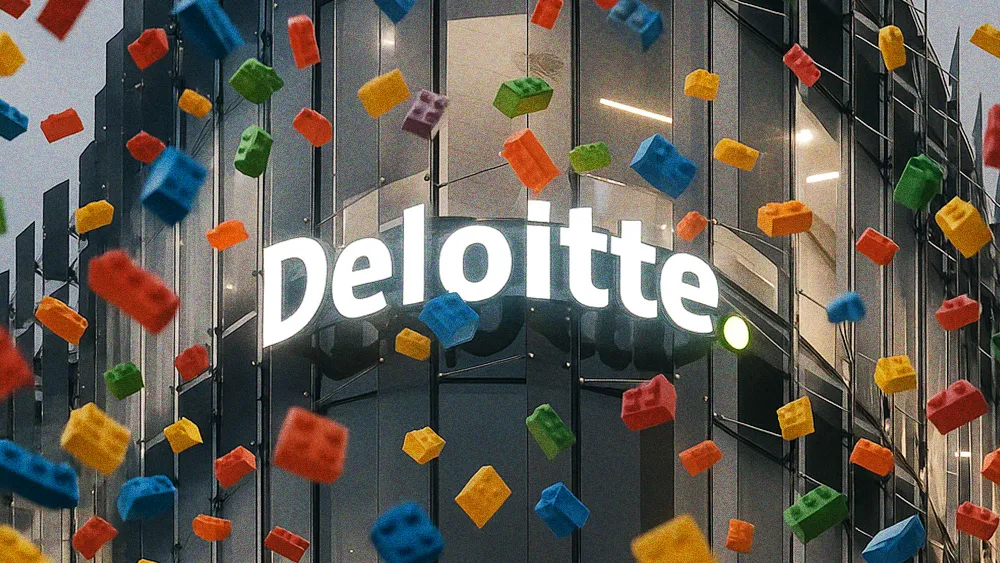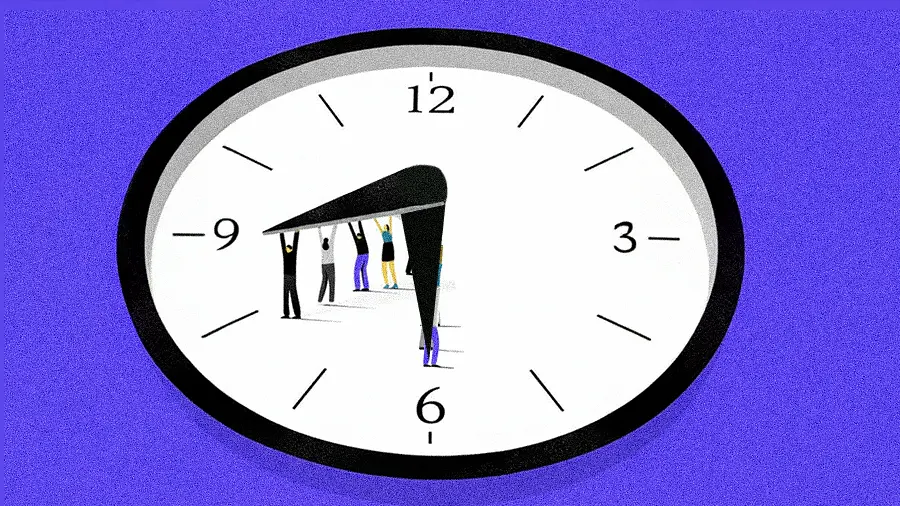As AI fuels worker burnout, Deloitte introduces a ‘Lego allowance’ for employee wellbeing

Key Points
Deloitte’s $1,000 Lego allowance aims to address employee burnout, sparking debate on its effectiveness.
VP of Operations Marilyn Bretherick discusses the rise of AI could exacerbate burnout, prompting a shift towards mental health support over traditional bonuses.
Leadership must actively promote and integrate perks into company culture for them to be used by employees and actually have an effect.
AI optimization fuels employee burnout. This demands a strategic shift: prioritizing mental health solutions over traditional compensation. It's a critical investment in sustained human capital.

Marilyn Bretherick
VP of Operations
Enterprise Growth Leader
The bill for AI’s productivity boom is coming due, and it’s being paid in employee burnout. Legos may not be the first solution you imagine for burnout, but in an effort to creatively tackle workplace wellbeing, Deloitte is offering a $1,000 allowance for all kinds of wellbeing support, including Lego sets. Deloitte’s Lego allowance went viral, gathering support and criticism about whether the benefit could really make a dent in the burnout crisis.
For Marilyn Bretherick, a VP of Operations and enterprise growth leader with a Big Four background, this new reality isn’t just theoretical—it’s one she sees play out firsthand in operations. She contends that as tech speeds ahead, corporate benefits must try to meet pace to keep workers happy, healthy, and supported.
Happy on paper: In all the pressure and chaos AI can sometimes bring to operations, the state of company wellbeing gets lost in the mix. According to Bretherick, executives often operate under a statistical fallacy, where surface level data can check a box without real evaluation. “From an executive perspective, we’d say, ‘80% of our employees are happy with their benefits,’” she states. “But what research actually suggests is that 60% of people don’t use them and feel they lack work-life balance and flexibility.”
The sizzle and the steak: That disconnect explains why a headline-grabbing perk like Deloitte’s $1,000 Lego allowance resonates. But Bretherick cautions that such perks only work as part of a much larger, flexible strategy. “Headlines fixated on ‘Legos,’ but it was part of a broader, strategic well-being portfolio,” she explains. “Effective benefits must be holistic, flexible, and inclusive. One size doesn’t fit all.”
More AI, more problems: The existing disconnect in employee well-being amplifies with AI. “AI multiplies output, but it brings employee burnout. We must redefine productivity,” says Bretherick. “The cognitive load of training AI models will drive a strategic pivot to mental health support, eclipsing traditional compensation.” For the next three to five years, high-level thinkers will primarily train and tune AI models—a mentally taxing process bridging machine output and human logic, directly contributing to this burnout.
From perk to practice: A perk is only effective if it’s activated by leadership and woven into the company culture—a skill Bretherick says leaders need to be trained on. “Leaders have to be the ones to say, ‘No, I want you to take one hour this week and go to coaching so we can work on performance together,'” she explains. To drive adoption even further, she suggests gamification to give employees explicit permission to play. “If I were to roll out a Lego benefit, I would make it a fun competition—a Lego-a-thon,” she says. “The purpose of the benefit is to ask, ‘During your 40-hour week, when do you actually unplug and play?'”
From an executive perspective, we'd say, '80% of our employees are happy with their benefits, But what research actually suggests is that 60% of people don't use them and feel they lack work-life balance and flexibility.

Marilyn Bretherick
VP of Operations
Enterprise Growth Leader
From an executive perspective, we'd say, '80% of our employees are happy with their benefits, But what research actually suggests is that 60% of people don't use them and feel they lack work-life balance and flexibility.

Marilyn Bretherick
VP of Operations
Enterprise Growth Leader
Related articles
TL;DR
Deloitte’s $1,000 Lego allowance aims to address employee burnout, sparking debate on its effectiveness.
VP of Operations Marilyn Bretherick discusses the rise of AI could exacerbate burnout, prompting a shift towards mental health support over traditional bonuses.
Leadership must actively promote and integrate perks into company culture for them to be used by employees and actually have an effect.

Marilyn Bretherick
Enterprise Growth Leader
VP of Operations

VP of Operations
The bill for AI’s productivity boom is coming due, and it’s being paid in employee burnout. Legos may not be the first solution you imagine for burnout, but in an effort to creatively tackle workplace wellbeing, Deloitte is offering a $1,000 allowance for all kinds of wellbeing support, including Lego sets. Deloitte’s Lego allowance went viral, gathering support and criticism about whether the benefit could really make a dent in the burnout crisis.
For Marilyn Bretherick, a VP of Operations and enterprise growth leader with a Big Four background, this new reality isn’t just theoretical—it’s one she sees play out firsthand in operations. She contends that as tech speeds ahead, corporate benefits must try to meet pace to keep workers happy, healthy, and supported.
Happy on paper: In all the pressure and chaos AI can sometimes bring to operations, the state of company wellbeing gets lost in the mix. According to Bretherick, executives often operate under a statistical fallacy, where surface level data can check a box without real evaluation. “From an executive perspective, we’d say, ‘80% of our employees are happy with their benefits,’” she states. “But what research actually suggests is that 60% of people don’t use them and feel they lack work-life balance and flexibility.”
The sizzle and the steak: That disconnect explains why a headline-grabbing perk like Deloitte’s $1,000 Lego allowance resonates. But Bretherick cautions that such perks only work as part of a much larger, flexible strategy. “Headlines fixated on ‘Legos,’ but it was part of a broader, strategic well-being portfolio,” she explains. “Effective benefits must be holistic, flexible, and inclusive. One size doesn’t fit all.”

Marilyn Bretherick
Enterprise Growth Leader
VP of Operations

VP of Operations
More AI, more problems: The existing disconnect in employee well-being amplifies with AI. “AI multiplies output, but it brings employee burnout. We must redefine productivity,” says Bretherick. “The cognitive load of training AI models will drive a strategic pivot to mental health support, eclipsing traditional compensation.” For the next three to five years, high-level thinkers will primarily train and tune AI models—a mentally taxing process bridging machine output and human logic, directly contributing to this burnout.
From perk to practice: A perk is only effective if it’s activated by leadership and woven into the company culture—a skill Bretherick says leaders need to be trained on. “Leaders have to be the ones to say, ‘No, I want you to take one hour this week and go to coaching so we can work on performance together,'” she explains. To drive adoption even further, she suggests gamification to give employees explicit permission to play. “If I were to roll out a Lego benefit, I would make it a fun competition—a Lego-a-thon,” she says. “The purpose of the benefit is to ask, ‘During your 40-hour week, when do you actually unplug and play?'”




